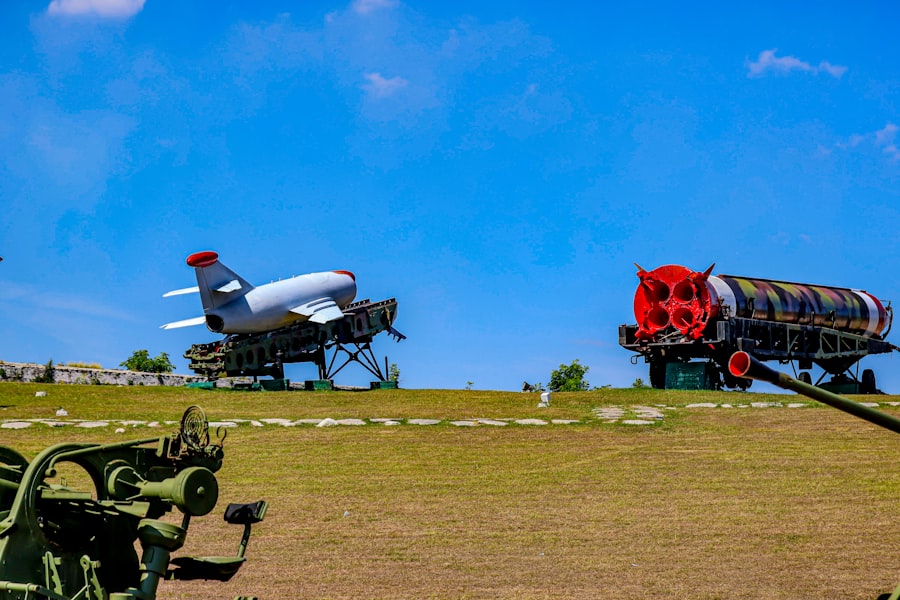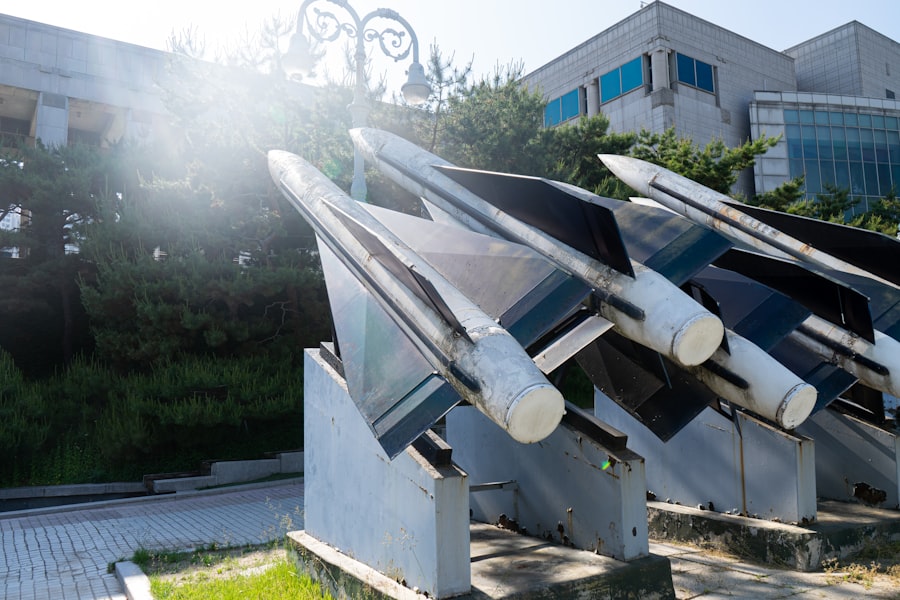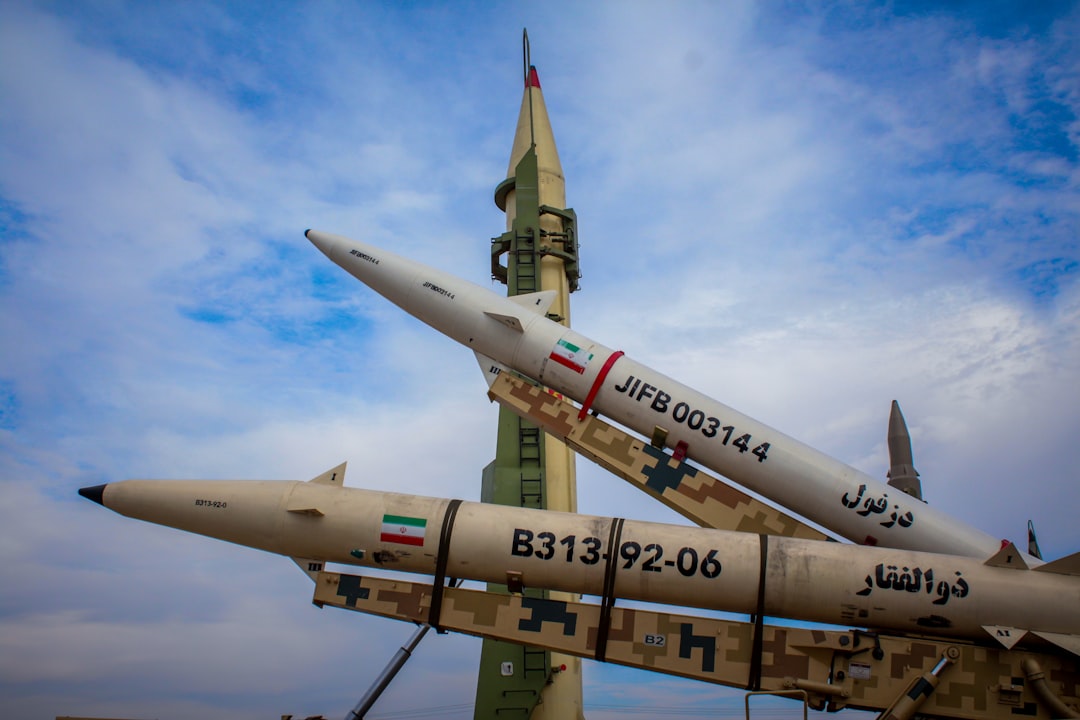The W25 warhead, a compact nuclear device developed by the United States during the Cold War, emerged as a significant component of the nation’s strategic arsenal. Designed in the late 1950s and early 1960s, the W25 was intended for use with the Polaris missile system, which was a crucial element of the U.S. Navy’s nuclear deterrent strategy. Weighing approximately 600 pounds and possessing a yield of around 1.2 megatons, the W25 was notable for its relatively small size and weight, allowing it to be deployed on submarines and other platforms with limited space. This warhead represented a shift in nuclear strategy, emphasizing the need for versatile and mobile nuclear capabilities in an era defined by the threat of mutually assured destruction. The development of the W25 was not merely a technical achievement; it was also a reflection of the geopolitical climate of the time. The Cold War was characterized by intense rivalry between the United States and the Soviet Union, leading to an arms race that spurred rapid advancements in nuclear technology. The W25 warhead was part of a broader effort to ensure that the U.S. maintained a credible deterrent against potential Soviet aggression. As tensions escalated, the need for reliable and effective nuclear weapons became paramount, and the W25 played a crucial role in this strategic calculus.
Key Takeaways
- The W25 warhead was developed during the Cold War as part of the United States’ nuclear arsenal.
- The Cold War space race led to the use of the moon as a testing ground for nuclear technology, including the W25 warhead.
- The W25 warhead had a significant impact on lunar exploration, influencing the design and objectives of space missions.
- The legacy of the W25 warhead on space technology includes advancements in propulsion and power systems for space exploration.
- The W25 warhead’s role in shaping international relations and its ethical considerations in space technology have sparked debates and discussions.
The Cold War Space Race
The Cold War space race was a defining aspect of the geopolitical landscape during the mid-20th century, characterized by fierce competition between the United States and the Soviet Union to achieve dominance in space exploration. This rivalry was not merely about scientific achievement; it was deeply intertwined with national security and ideological supremacy. The launch of Sputnik by the Soviet Union in 1957 marked a pivotal moment, igniting fears in the United States about falling behind in technological advancements that could have military applications.
In response, the U.S. ramped up its own space program, leading to significant investments in research and development. As both superpowers sought to establish their presence in space, they recognized that advancements in rocketry and satellite technology could have profound implications for military strategy.
The development of intercontinental ballistic missiles (ICBMs) and submarine-launched ballistic missiles (SLBMs) became critical components of this competition. The W25 warhead, with its compact design suitable for deployment on submarines, exemplified how advancements in space technology were closely linked to nuclear capabilities. The race to explore space was not just about scientific discovery; it was also about ensuring that each nation could project power and influence from above.
The Moon as a Testing Ground

The Moon emerged as a focal point for both scientific exploration and military strategy during the Cold War. While NASA’s Apollo program aimed to land humans on the lunar surface, there were also military considerations at play. The Moon offered a unique environment for testing various technologies, including those related to nuclear weapons.
The idea of using the Moon as a testing ground for nuclear devices was not widely publicized, but it reflected the broader context of military interest in space. The potential for conducting tests on the Moon raised numerous questions about safety, ethics, and international law. While some viewed it as an opportunity to advance scientific knowledge, others expressed concerns about the implications of nuclear detonations in space.
The W25 warhead’s design made it particularly suitable for such tests, as its compact size allowed for easier deployment on various platforms. However, the idea of detonating nuclear devices on the Moon remained controversial and was ultimately overshadowed by diplomatic efforts to limit nuclear testing on Earth.
The Impact of the W25 Warhead on Lunar Exploration
| Metrics | Data |
|---|---|
| Crater Size | 10 meters in diameter |
| Impact Depth | 5 meters into lunar surface |
| Surface Displacement | 20 meters radius from impact point |
| Seismic Activity | Recorded up to 3 kilometers from impact site |
The W25 warhead’s development had indirect but significant implications for lunar exploration. As nations sought to assert their technological prowess, the advancements made in nuclear technology influenced various aspects of space exploration. The engineering challenges associated with creating compact nuclear warheads like the W25 led to innovations in materials science and propulsion systems that would later benefit civilian space programs.
Moreover, the intense focus on military applications during the Cold War spurred investments in research that ultimately contributed to our understanding of space travel. The technologies developed for missile systems and nuclear warheads found their way into civilian applications, enhancing rocket design and satellite capabilities. As a result, while the W25 warhead itself was primarily a military asset, its development indirectly supported advancements in lunar exploration and other scientific endeavors.
The Legacy of the W25 Warhead on Space Technology
The legacy of the W25 warhead extends beyond its immediate military applications; it has left an indelible mark on space technology as a whole. The engineering principles and materials developed during its creation contributed to advancements in various fields, including aerospace engineering and satellite technology. The compact design of the W25 demonstrated that powerful nuclear devices could be made smaller and more efficient, influencing subsequent designs for both military and civilian applications.
Furthermore, the technological race spurred by the Cold War led to significant investments in research and development that laid the groundwork for modern space exploration. Innovations in propulsion systems, guidance technologies, and materials science can trace their roots back to the intense competition between superpowers during this era. As nations continue to explore space today, they benefit from the technological advancements that were initially driven by military needs, including those associated with warheads like the W25.
The Political and Environmental Implications of the W25 Warhead

The political implications of the W25 warhead were profound, shaping international relations during a critical period in history. As nations developed their nuclear arsenals, concerns about proliferation and global security emerged. The existence of weapons like the W25 contributed to an atmosphere of tension and mistrust between nations, as each sought to maintain a strategic advantage over potential adversaries.
Diplomatic efforts aimed at arms control became increasingly important as countries recognized the need to mitigate the risks associated with nuclear weapons. In addition to political ramifications, there were significant environmental concerns associated with nuclear technology. The potential for testing nuclear devices on celestial bodies raised questions about contamination and long-term impacts on extraterrestrial environments.
While such tests were never conducted on the Moon due to international treaties prohibiting nuclear explosions in space, discussions surrounding these issues highlighted the need for responsible stewardship of both Earth and other celestial bodies.
The Future of Lunar Exploration and the W25 Warhead’s Influence
As humanity looks toward future lunar exploration, the legacy of the W25 warhead continues to resonate within discussions about technology and ethics in space. With renewed interest in returning humans to the Moon and establishing sustainable lunar bases, lessons learned from past military applications are being revisited. The technological advancements driven by Cold War-era developments have paved the way for modern missions that prioritize scientific discovery while considering safety and environmental impacts.
Moreover, as nations collaborate on lunar exploration initiatives, there is an opportunity to reflect on past practices related to nuclear technology in space. The international community is increasingly aware of the need for cooperative frameworks that prioritize peaceful exploration over militarization. The influence of historical developments like the W25 warhead serves as a reminder of both the potential benefits and risks associated with advanced technologies in space.
The Scientific Discoveries Enabled by the W25 Warhead
While primarily designed for military purposes, the technological advancements associated with the W25 warhead inadvertently facilitated scientific discoveries beyond its intended use. Research into materials science, propulsion systems, and radiation detection technologies has had far-reaching implications for various fields of study. For instance, innovations developed during the creation of compact nuclear devices have contributed to advancements in satellite technology and remote sensing capabilities.
Additionally, understanding radiation effects on materials has been crucial for both space exploration and Earth-based applications. The knowledge gained from studying nuclear devices has informed safety protocols for astronauts venturing into high-radiation environments, such as those encountered during lunar missions. Thus, while the W25 warhead itself may not have been directly involved in scientific exploration, its legacy continues to influence research endeavors across multiple disciplines.
The Role of the W25 Warhead in Shaping International Relations
The existence of weapons like the W25 warhead played a significant role in shaping international relations during the Cold War era and beyond. As nations developed their nuclear arsenals, concerns about deterrence and security became paramount considerations in diplomatic negotiations. The balance of power established through these weapons influenced alliances and rivalries across the globe.
Efforts toward arms control agreements such as the Nuclear Non-Proliferation Treaty (NPT) were driven by a desire to prevent further proliferation of nuclear weapons like the W25. These treaties aimed to promote disarmament while allowing for peaceful uses of nuclear energy—a delicate balance that continues to shape international relations today. The legacy of such weapons underscores ongoing debates about security, diplomacy, and ethical considerations surrounding nuclear technology.
The Ethical Considerations of Nuclear Technology in Space
The ethical implications surrounding nuclear technology in space are complex and multifaceted. As humanity ventures further into space exploration, questions arise regarding responsible use of advanced technologies like those exemplified by the W25 warhead.
The historical context of weapons development raises important ethical questions about how societies prioritize scientific advancement versus safety considerations. As nations collaborate on future missions to explore celestial bodies, there is an opportunity to establish ethical frameworks that prioritize peaceful exploration while addressing potential risks associated with advanced technologies.
The W25 Warhead’s Place in History and its Cultural Impact
The W25 warhead occupies a unique place in history as both a symbol of Cold War tensions and an example of technological innovation driven by military needs. Its development reflects broader themes within society regarding security, power dynamics, and ethical considerations surrounding advanced technologies. As cultural narratives evolve around space exploration—often romanticized through literature and film—the legacy of weapons like the W25 serves as a reminder of humanity’s complex relationship with technology.
In popular culture, representations of nuclear weapons often evoke fear or cautionary tales about unchecked technological advancement. As society grapples with these themes today—especially within discussions surrounding space exploration—understanding historical contexts like that of the W25 warhead can inform contemporary debates about responsibility and stewardship in our quest for knowledge beyond Earth’s atmosphere.
In exploring the fascinating history of nuclear technology and its potential applications beyond Earth, the W25 warhead’s proposed use on the Moon stands out as a particularly intriguing concept. This idea, which was part of a broader discussion on the militarization of space during the Cold War, highlights the extent to which nations considered leveraging nuclear capabilities for strategic advantage. For more insights into the historical context and implications of such proposals, you can read a related article on the topic by visiting Hey Did You Know This. This article delves into the broader narrative of nuclear technology’s role in space exploration and defense strategies.
WATCH THIS! 🤯America Tried to Nuke the Moon
FAQs
What is the W25 warhead?
The W25 warhead is a nuclear warhead developed by the United States during the Cold War era. It was designed to be used with various missile systems, including the Polaris and Poseidon submarine-launched ballistic missiles.
What is the purpose of the W25 warhead?
The W25 warhead was designed to be a part of the United States’ nuclear deterrent strategy during the Cold War. It was intended to provide a credible threat of nuclear retaliation in the event of a conflict with the Soviet Union.
What is the significance of the W25 warhead being on the Moon?
The idea of placing a W25 warhead on the Moon was proposed as part of a concept called “Project A119” in the late 1950s. The project aimed to demonstrate the United States’ capability to conduct a nuclear explosion on the Moon, which was seen as a potential show of strength during the Cold War.
Was the W25 warhead actually placed on the Moon?
No, the W25 warhead was never actually placed on the Moon. The Project A119 concept was ultimately abandoned, and no nuclear weapons have ever been detonated on the Moon.
What are the legal implications of placing a W25 warhead on the Moon?
Placing a W25 warhead, or any nuclear weapon, on the Moon would be in violation of international treaties and agreements, including the Outer Space Treaty of 1967, which prohibits the placement of nuclear weapons in space.
What are the potential risks of placing a W25 warhead on the Moon?
The placement of a W25 warhead on the Moon would pose significant environmental and safety risks, as well as potential geopolitical consequences. Additionally, the detonation of a nuclear weapon on the Moon could have unknown effects on the lunar environment and could potentially impact future scientific exploration and colonization efforts.
